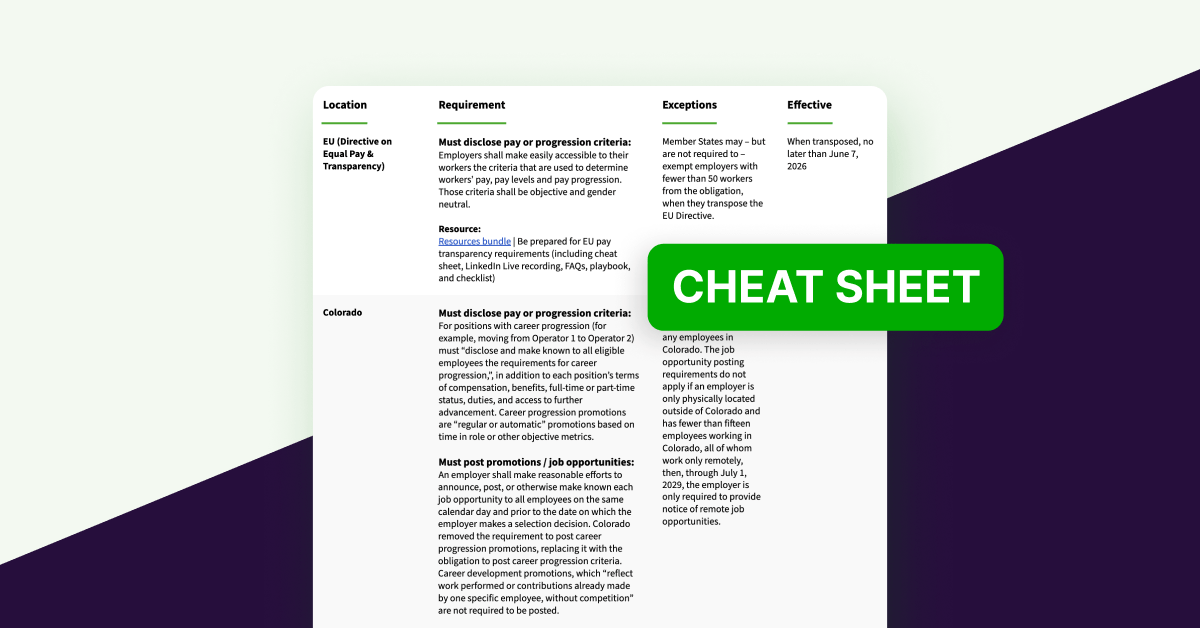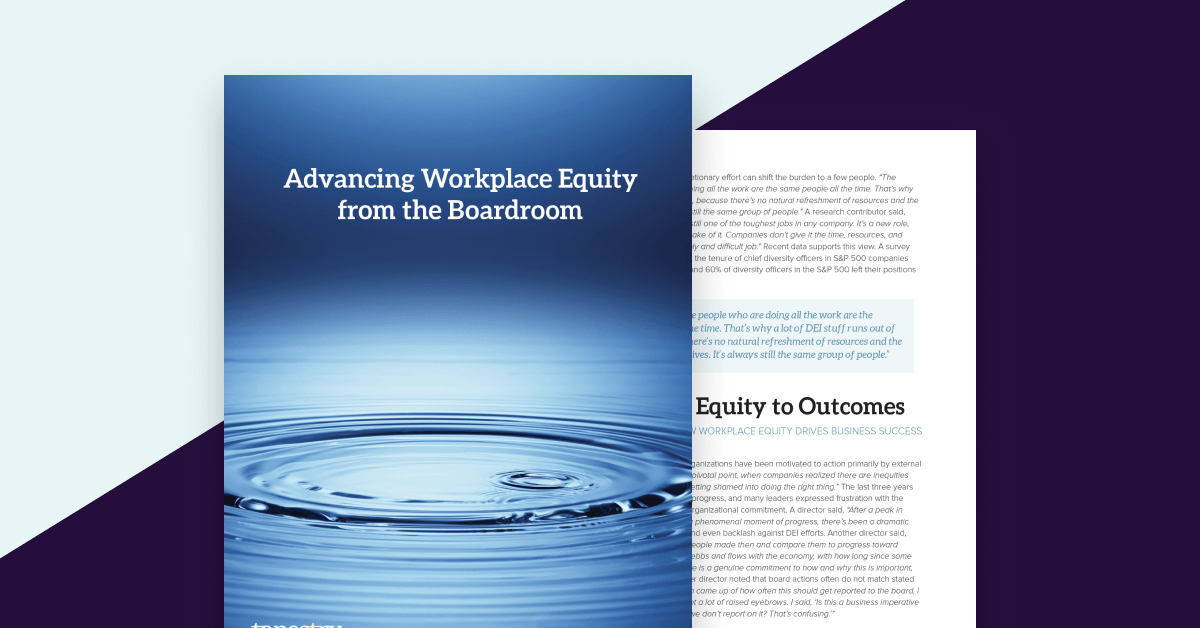Whatever you call it — merit cycle planning, annual salary review, year end, or focal point — if you’re a Total Rewards/Compensation professional, right now you’re likely consumed with planning for merit budgets, preparing communications and materials to send to leaders conducting performance reviews and making pay decisions, and gearing up to be “heads down” for the rest of the year.
However, a unique set of circumstances is making this annual review period different from any other in recent history. Total Rewards and Compensation teams have to remain competitive in a continued tight labor market with high employee movement and rising inflation, while also potentially facing budget pullbacks due to economic signals of a potential recession — all of which is causing planning, forecasting, and budgeting unpredictability. Total Rewards and Compensation professionals are challenged with making sense of all of this uncertainty.
The good news? Moments of uncertainty are also windows of opportunity — an opening to break down old frameworks and rethink long-established approaches. So let’s take a moment to dream big. What if there was a better way? Instead of one massive point-in-time exercise, you could have:
- Access to real-time market data and employee insights to support every compensation and employee hiring and promotion decision, day in and day out
- A clear understanding of the big picture view of global workplace equity at your company (not just pay equity, but also equity in hiring, promotion, and development opportunities)
- The ability to fix root causes of inequities to prevent them from cropping up again, rather than just re-addressing the same symptoms once a year
- The data and reporting you needed to demonstrate and communicate your strategy and progress around workplace equity to a variety of stakeholders, from investors to employees
Work happens all year. Shouldn’t pay and opportunity equity adjustments happen year-round too?
When you’re tied to an annual merit cycle, it’s easy to get stuck in a zoomed-in view of your compensation adjustments, embedding pay equity adjustments with merit increases and saying, “That’s good enough for now, until next year.”
But workplace equity is multi-dimensional. It requires thinking about the big picture of equity throughout the entire employee lifecycle and across every form of rewards. It requires ongoing monitoring and maintenance, not just an annual scramble to fix the issues that reappeared over the past year. It requires coordination and consensus between multiple stakeholders in the organization beyond Total Rewards/Compensation — including HR, DE&I, Talent Management, Comms/PR, and Legal — to build a holistic workplace equity strategy that encompasses every “moment that matters” for employees, from hiring to retiring, across the entire employee experience.
A great example of building a cross-functional team to strategically embed equity from day one of the employee lifecycle is Elevance Health (formerly Anthem). In a recent webinar, Adam Swanlund, Compensation Manager for Elevance Health, shared his organization’s step-by-step journey of developing their workplace equity blueprint, executing on each piece by collaborating across HR functions, and then communicating the change to employees.
To achieve workplace equity, below are elements to consider as you build your strategy.
Build an ongoing approach
The root causes of inequity don’t hit the pause button once you close out your annual merit cycle. That’s why one of the most fundamental shifts that Syndio is starting to see is a move to more frequent pay equity analyses, whether that’s every six months, quarterly, or even more often than quarterly. With the support of technology, employers are embedding periodic analyses throughout the year to ensure they are monitoring the outcomes of compensation changes.
By shifting from a reactive, point-in-time correction to an ongoing, proactive adjustment process, organizations can stay on top of the state of equity in their company. This reduces the likelihood of requiring substantial changes (and budgets) to remediate equity during the merit cycle.
Analyze all forms of compensation
The vast majority of pay equity analyses focus on base pay. But with the aid of purpose-built pay equity technology, it’s becoming much easier to bring other forms of rewards, such as variable pay, target bonuses, and equity/stock grants, into the equation to ensure that the full range of employee compensation is equitably distributed.
Analyze more than just compensation
To fix the pay gap, you actually have to go beyond pay and take equal access to opportunities into account. This means that to ensure an equitable workplace, in addition to pay equity analyses, organizations need to evaluate multiple dimensions of the employee experience — such as representation, diversity benchmarks, recruiting and hiring, performance ratings, promotions, engagement, leadership behaviors, and retention.
Because merit cycles at most companies have become inextricably linked to performance reviews, it is critical that the performance review and ratings process is also regularly examined to ensure it is free from bias. Most performance review processes are too ambiguous, inconsistent, and open to the interpretation of individual managers, leading to unconscious bias creeping in despite good intentions. By relying on a potentially biased performance management system, you might be unintentionally creating inequities while trying to simultaneously correct for them.
Analyze your entire employee population globally
While companies with a multi-country workforce must solve for pay-related compliance and reporting requirements at the local level, in order to ensure a globally consistent workplace equity strategy, it’s helpful to maintain a 10,000-foot view of equity across the entire organization. Leading companies employ a holistic approach to their analyses, using a consistent methodology across global populations while controlling for local market factors and taking action in local currencies. This way, they can stand behind their statements that they are ensuring fair pay for all of their employees, not just select populations.
Fix the source, not the symptoms
One-off annual pay equity remediations are by nature futile, since they only temporarily solve the symptom of inequities, rather than fixing the root cause in order to prevent inequities from cropping up again over time. Syndio’s leading software has advanced root cause analytics to help you ensure your compensation policies are working as intended, as well as on-demand recommendations for equitable starting salaries and promotions, ensuring fair pay from day one.
Communicate clearly and often
When it comes to workplace equity communications, it’s not only vital to loop in the right stakeholders at the top for consensus, buy-in, and oversight — it’s also critical that you ensure that employees clearly understand how your workplace equity efforts impact their compensation. Don’t leave it up to employees to make assumptions or construct their own narrative of the state of equity at your company.
“It isn’t the level of pay that creates employee engagement — it’s the fairness of pay.” – Josh Bersin
When analyzing the components that drive a successful employee experience, The Josh Bersin Company found that “using fair and equitable rewards and recognition practices” was the sixth most important out of 75. The perception of fairness matters, so it’s crucial to be transparent about your pay strategy so employees understand how equity is embedded and feel confident that your merit cycle is fair. This, in turn, helps you create a positive employer brand that drives retention and engagement. Research from The Josh Bersin Company also found that companies that make rewards and recognition fair and equitable are 4x more likely to have excellent business outcomes and 5x more likely to have outstanding people outcomes.
Use one source of truth to bring it all together
Putting together so many pieces can seem daunting when working out of a spreadsheet, but it can more easily come to fruition with the help of a robust Workplace Equity Analytics Platform. This technology brings together the different dimensions of equity that touch the employee experience, serving as a central source of truth for teams and stakeholders while providing the data and insights needed to drive equitable and effective business decisions.
Seize the moment to think big — then reassess and recommit
Amidst the uncertainty of today’s economic and employment landscapes, we have a chance to rethink how we pay employees fairly and competitively as well as give them opportunities for growth and advancement. For example, Syndio’s customers are finding success by:
- Going beyond pay equity to dig into how pay is being delivered, prioritize areas for change, and model new scenarios
- Using pay equity as the foundation, then moving to longer-term strategies for modeling and testing pay program changes
- Leveraging their pay equity analyses for pay decisions to prevent inequities, and to inform pay ranges for job postings so the ranges are both competitive and internally fair
- Working to unpack drivers of opportunity gaps so they can better enable opportunities across their organizations
By shifting to a proactive approach that uses data to embed equity into every employment and compensation decision year-round, perhaps we can even move away from an annual merit cycle. Rather than running through the same process of remediating inequities year after year, building momentum behind an ongoing workplace equity program can help power a better day-to-day employee experience.
These steps will better align organizations for the business climate at hand, while also reinforcing their commitment to DE&I objectives and showing the value that they place on their employees and communities. Why not dream big?



